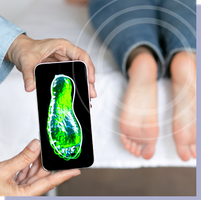Understanding Chronic Pain Symptoms in the Elderly
Chronic pain can significantly impact quality of life, especially for seniors. This section will delve into the definition of chronic pain, its common causes in seniors, and the symptoms seniors may experience.
Chronic pain is defined as any pain that lasts longer than three to six months. Unlike acute pain, which is a normal sensation that alerts us to a possible injury, chronic pain continues and sometimes remains even after the injury has healed. It can affect any part of the body and can vary in intensity, from mild discomfort to severe pain that interferes with daily activities.
Common causes of chronic pain in the elderly
There are various causes of chronic pain in the elderly. These can include arthritis, which affects the joints; osteoporosis, a condition that weakens the bones; and neuropathy, the result of damage to the peripheral nerves. Other common causes include ongoing pain from past injuries or surgeries, cancer, and certain diseases such as diabetes and heart disease. It is important to note that chronic pain is not a normal part of aging and should be treated with a healthcare professional.
Symptoms of chronic pain in the elderly can vary greatly depending on the underlying cause. However, some common symptoms include persistent pain that does not go away after a reasonable period of time, pain that may be described as burning, aching, or electrical, and discomfort, aching, pressure, or stiffness. Other symptoms can include fatigue, sleep disturbances, mood changes such as depression, anxiety, and irritability, and decreased appetite.
Understanding chronic pain in the elderly is the first step toward treating it effectively. By recognizing the signs and symptoms, seniors can seek appropriate treatment and improve their quality of life.
Common chronic pain conditions in the elderly
One of the most common chronic pain conditions experienced by seniors is arthritis. Understanding arthritis and strategies for its pain relief can significantly improve the quality of life for our elderly loved ones.
arthritis
Arthritis is a condition that causes inflammation and pain in one or more joints. It is especially common in the elderly, affecting nearly 50% of those over the age of 65.
Arthritis in the elderly is often the result of years of wear and tear on the joints. This can lead to stiffness, pain, and difficulty moving. There are many types of arthritis, but the most common in the elderly are osteoarthritis and rheumatoid arthritis. Osteoarthritis is caused by the breakdown of cartilage in the joints, while rheumatoid arthritis is an autoimmune disease that attacks the joints.
Treating arthritis pain in the elderly involves a combination of strategies such as:
Medication: Over-the-counter pain relievers and anti-inflammatory medications can help treat arthritis pain. In some cases, doctors may prescribe stronger medications.
Physical therapy: Regular exercise can help maintain joint flexibility and strengthen the muscles that support them.
Lifestyle changes: Maintaining a healthy weight and eating a balanced diet can help reduce arthritis pain. Smoking and excessive alcohol consumption can worsen arthritis symptoms, so it’s important to avoid these habits.
Arthritis can be a challenging condition for seniors, but with understanding the condition, it is treatable. Remember, it is important to consult with a qualified professional for personalized advice and treatment options.
Fibromyalgia
Fibromyalgia is a chronic condition characterized by widespread pain and tenderness throughout the body. It is more common in women than men, and the risk of developing fibromyalgia increases with age.
Fibromyalgia in older adults can be a bit more challenging to diagnose and treat. This is because older adults often have other health conditions that can complicate the picture. Symptoms of fibromyalgia can include widespread pain, fatigue, sleep disturbances, and cognitive difficulties, often referred to as “fibro fog.”
According to a study published in the Journal of Gerontology, about 7% of people aged 65 and older suffer from fibromyalgia. It’s important to note that fibromyalgia is not a normal part of aging. If you or a loved one is experiencing persistent, unexplained pain, it’s important to seek medical attention.
Treatment methods for fibromyalgia
While there is no cure for fibromyalgia, there are fibromyalgia treatments available that can help with symptoms:
Medication: Certain medications can help reduce pain and improve sleep. For example, painkillers, antidepressants, and anti-seizure medications.
Physical therapy: A physical therapist can help you improve your strength, which can help reduce the impact of fibromyalgia on your daily life.
Exercise: Regular exercise can help reduce pain and improve overall health. Low-impact exercises, such as walking, swimming, or yoga, can be especially helpful.
Counseling: Talking to a counselor can help you develop strategies for coping with the stress and emotional impact of living with chronic pain.
Remember, it’s important to work with experts in the field to develop a treatment plan that’s right for you. Everyone’s experience with fibromyalgia is different, so what works for one person may not work for another.
Chronic pain treatment
Treating chronic pain in the elderly can be a complex process. It often involves a combination of different strategies, including medication. Let’s explore the options available.
Medications
Medications play a crucial role in the treatment of chronic pain in the elderly. They can be divided into two main categories: over-the-counter and prescription medications. Each has its own benefits and potential risks.
Over-the-counter medications
Over-the-counter (OTC) medications are readily available and can be effective for mild to moderate pain. Common OTC pain relievers include acetaminophen (Tylenol), ibuprofen (Advil, Motrin), and naproxen (Aleve). These medications can help reduce inflammation and relieve pain. However, they should be used with caution in the elderly due to possible side effects such as upset stomach, kidney problems, and an increased risk of heart attack or stroke.
Prescription drugs
For more severe or persistent pain, doctors may prescribe stronger medications. These can include opioids like morphine and oxycodone, non-opioid medications like gabapentin, or even certain types of antidepressants and anticonvulsants, which have been found to be effective for some types of chronic pain. Prescription medications should always be used under the supervision of a doctor, as they can have serious side effects and can lead to dependence or addiction if not used properly.
It’s important to remember that while medications can help with pain, they are not a solution. They should be used as part of a comprehensive treatment plan that includes other strategies such as physical therapy, lifestyle changes, and alternative therapies.
Alternative treatments
When dealing with chronic pain, it’s important to explore all of your options. Along with traditional medications, there are a number of alternative treatments that can provide relief. These include physical therapy, acupuncture, and massage therapy. Let’s take a closer look at each of these treatments to understand how they can help.
Physical therapy: Physical therapy is a noninvasive approach that can help seniors manage chronic pain. It includes exercises designed to improve strength, flexibility, and overall mobility. According to research from the American Physical Therapy Association, physical therapy can reduce pain and improve physical function in seniors with chronic pain. It is a safe and effective way to help with pain without the side effects of medication.
Acupuncture: Acupuncture is an ancient Chinese treatment that involves inserting thin needles into specific points on the body. It is believed to stimulate the body’s natural painkillers and promote healing. A study published in the Archives of Internal Medicine found that acupuncture can be effective in treating chronic pain, including back pain, osteoarthritis, and headaches. It is a natural, non-drug method that can provide significant relief.
Massage therapy : Massage therapy involves manipulating the body’s soft tissues to relieve pain and tension. It can be especially beneficial for seniors who suffer from arthritis, fibromyalgia, and other chronic pain conditions. According to the Mayo Clinic, massage therapy can help reduce pain, improve circulation, and promote relaxation. It is a soothing and therapeutic approach to chronic pain relief.
In conclusion, alternative therapies such as physical therapy, acupuncture, and massage can play a significant role in the treatment of chronic pain in the elderly. They offer a natural, non-drug approach to pain management that can be especially helpful for those who are unable to take certain medications due to other health conditions. Always consult a healthcare professional before beginning any new treatment plan.
Ways to cope with chronic pain
Chronic pain can be a significant challenge for seniors. However, with the right strategies and support, this pain can be effectively managed and quality of life improved. Let’s explore some key aspects of managing chronic pain in seniors.
The importance of a support system
A strong support system goes a long way in helping you cope with chronic pain. Family, friends, and healthcare providers can provide emotional support and help with daily tasks. They can also encourage healthy lifestyle habits, such as regular exercise and a balanced diet, which can help relieve some pain symptoms. A study in the American Journal of Public Health found that seniors with a strong support system reported less pain and better overall health.
The role of mental health in coping with pain
Mental health has a significant impact on how we perceive and deal with pain. Stress, anxiety, and depression can increase pain levels, making it more difficult to manage. Positive mental health can help seniors better cope with chronic pain. Techniques such as mindfulness, meditation, and cognitive behavioral therapy can help improve mental health and, thus, pain management. According to the American Psychological Association, incorporating mental health care significantly improves outcomes for seniors.
Case Study: Let’s look at a real-life case to understand how these strategies work in real life. Mrs. Hannah, a 75-year-old woman, was struggling with chronic pain from arthritis. Her healthcare team tailored a comprehensive pain management plan for her that included medication, physical therapy, and a strong support system. They also incorporated psychotherapy into her treatment plan, teaching her mindfulness techniques to manage her stress levels. Within a few months, Hannah reported a significant decrease in her pain levels and an improvement in her overall quality of life. This case highlights the importance of a holistic approach to treating chronic pain in the elderly.
As we age, our bodies undergo various changes, and chronic pain can become a common problem. However, there are effective ways to improve the quality of life for our loved ones. Another such method is home care.
Home care
These are professional therapists who provide personalized care and assistance in the comfort of the patient’s home. Let’s delve into the benefits of home care:
Home care offers many benefits for treating chronic pain in the elderly. It provides a comfortable and familiar environment, which can reduce stress and anxiety that often exacerbate pain. Home care also offers personalized treatment plans tailored to the individual’s needs and preferences. This can include techniques such as medications, physical therapy, and lifestyle changes. Furthermore, home care allows for continuous monitoring and immediate response to any changes in the patient’s condition.
Consider the case of Mrs. Sarah, an 80-year-old woman suffering from chronic arthritis pain. Mrs. Sarah opted for home care services after her pain became severe. Her treatment plan included medication, gentle exercises, and dietary changes. Within a few weeks, Sarah reported a significant reduction in her pain levels. She also expressed increased happiness and satisfaction with her quality of life. This case highlights the potential of home care.
Home care can be an effective solution for treating chronic pain in the elderly. It offers personalized care, continuous monitoring, and the comfort of being in a familiar environment.
Hospice care
Hospice care is a specialized type of care designed to provide comfort, support, and pain management for people in the advanced stages of a serious illness. The primary goal of hospice care is to improve the quality of life of patients, allowing them to live as comfortably and fully as possible.
When it comes to chronic pain, hospice care teams are equipped with the knowledge and skills. They use a combination of medications, therapy, and holistic approaches to help relieve pain and improve the patient’s overall comfort. The focus is not only on physical pain, but also on emotional and spiritual pain, providing a comprehensive approach to patient care.
The role of physiotherapy in the treatment of chronic pain
Physical therapy plays a crucial role in treating chronic pain. It involves exercises that help strengthen the body, improve mobility, and reduce pain. Physical therapists use techniques like massage, heat therapy, and stretching exercises to relieve pain. They also teach how to prevent further injuries. According to the American Physical Therapy Association, physical therapy can reduce pain and improve physical function in seniors with chronic conditions like osteoarthritis and rheumatoid arthritis.
The benefits of occupational therapy
This form of therapy focuses on improving daily living and work activities. Occupational therapists help seniors learn how to perform tasks in ways that don’t worsen their pain. They may suggest modifications to the home or workplace to make them more comfortable and accessible. Occupational therapy can also teach skills such as relaxation techniques and coping strategies.
The importance of regular physical activity
Regular exercise is essential, helping you maintain a healthy weight, which can reduce stress on your joints and ease pain. Exercise also increases flexibility and strength, which can help prevent further injuries. It also releases endorphins, the body’s natural painkillers. The National Institute on Aging recommends at least 150 minutes of moderate-intensity physical activity per week for seniors, along with muscle-strengthening activities two or more days per week.
Important points
As we conclude our discussion, it is important to highlight key insights. These insights will help you understand the nature of chronic pain, explore different treatment options, and appreciate the importance of a comprehensive treatment plan.
Understanding the nature of chronic pain
Chronic pain is a type of persistent pain that lasts for more than three months. For older adults, it is often associated with conditions such as arthritis, back pain, and neuropathy. Unlike acute pain, which signals an injury, chronic pain can persist even after the injury has healed. It is more than just a physical sensation; it can affect a person’s emotional well-being and quality of life.
Examining different treatment options
There is no one-size-fits-all solution for chronic pain. Treatment options can range from medication, physical therapy, to alternative therapies like acupuncture and massage. It is essential to work with a healthcare professional to find the most effective and appropriate treatment for each individual. Remember, what works for one person may not work for another.
The importance of a comprehensive treatment plan
A comprehensive treatment plan is essential when treating chronic pain in seniors. This plan should consider the senior’s overall health, lifestyle, and personal preferences. This may include regular checkups, medications, physical therapy sessions, and even mental health support. A comprehensive treatment plan can greatly improve the senior’s quality of life and help them.
In conclusion, treating chronic pain requires understanding, patience, and a comprehensive approach. It is about more than just treating pain; it is about improving the overall well-being and quality of life of the senior. With the right knowledge and resources, we can help our loved ones live better despite their chronic pain.









